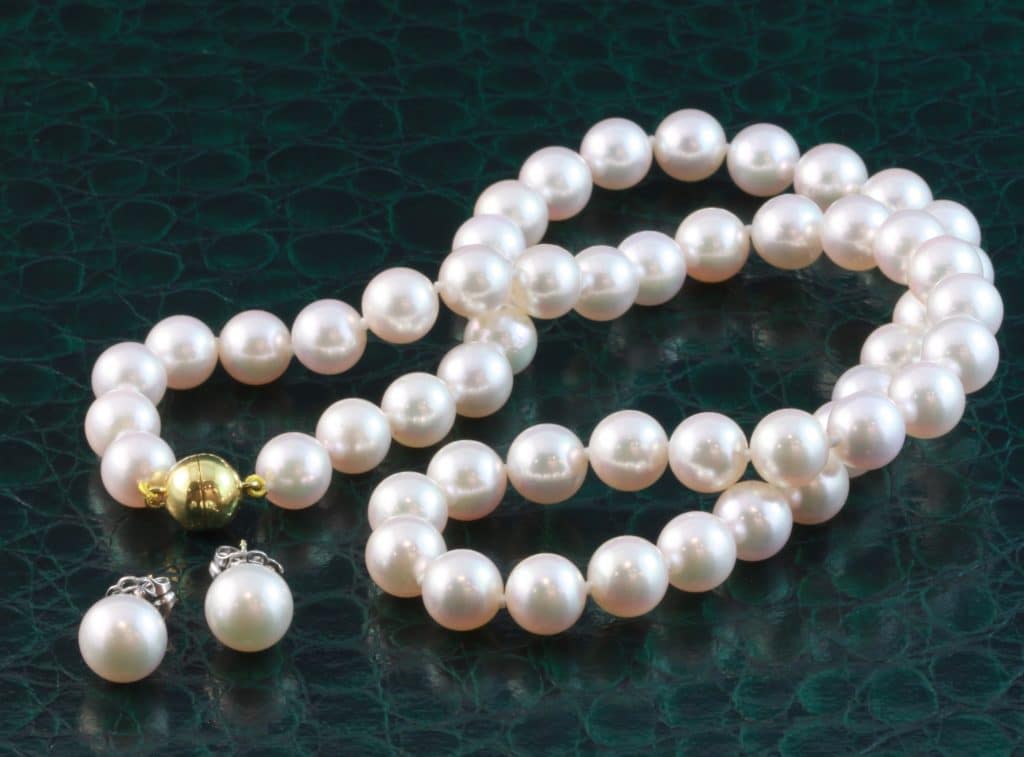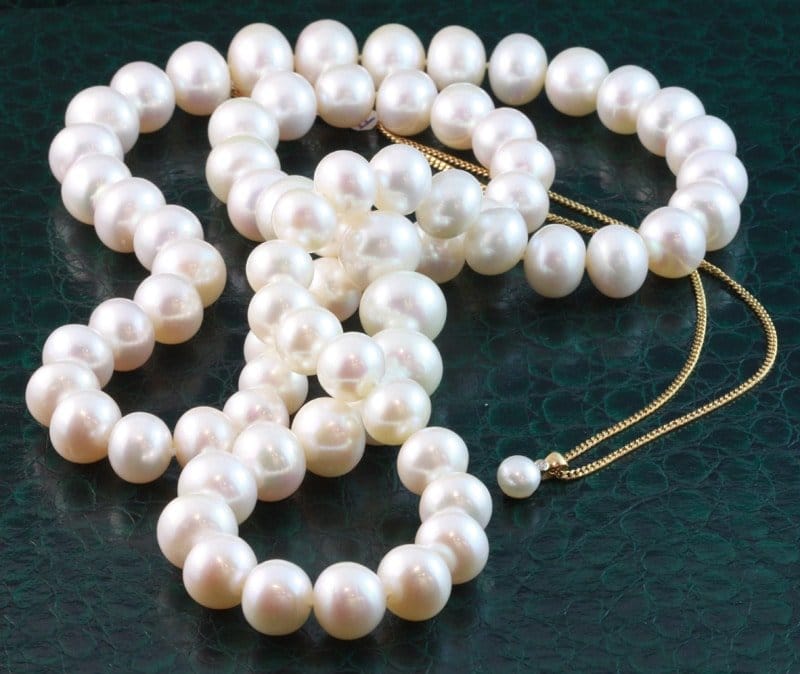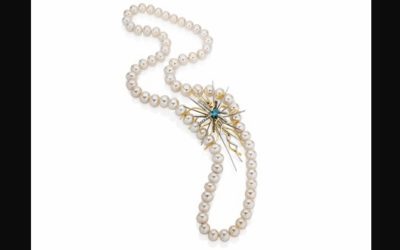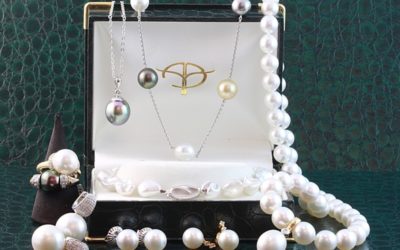Types of pearls

Akoya pearl necklace and earrings

South Sea pearl rings, pendant, earrings and a Keshi bracelet

Freshwater pearl necklace and pendant
Types of pearls
What is a pearl?
Pearl is classified as an organic gemstone – created by animals or plants to produce materials that have been used in jewellery for centuries.
Pearls unlike gemstones that can be mined and faceted come from varying species of oysters. Five main saltwater and freshwater oyster species are used to produce pearls we see today.
There are three main types of pearls:
Akoya pearls
This type of pearl originated in Japan and has been cultivated since the 1920’s and predominantly occur in a uniform round shape.
Sizes of Akoya pearls are generally smaller in comparison to other pearl types ranging in sizes up to 8mm.
Historically it took 3-4 years to cultivate Akoya pearls but with advances in technology a mere 6 months is now involved to produce one.
Japan’s technique to produce these pearls was a well kept secret and dominated the market for the first 50 years but currently is in a state of decline as pollution of Japanese waters have affected the environment.
China has since taken over production of most Akoya pearls due to protected waters providing pristine conditions for pearl growth.
South Sea pearls
South sea pearls come in four main varieties. Gold, white, Keshi and Tahitian or black pearls.
Pearls of these types are farmed from a number of places in the world.
Tahitian (or black) pearls are found in French Polynesia, producing 90-95% of the worlds’ black pearls. The colour varies from a dark grey to vibrant peacock hues.
White South Sea pearls are farmed in Australia (currently the worlds’ largest producer) but are also produced in Indonesia and the Philippines. These countries also produce South Sea pearls of a golden colour.
South Sea pearls generally take 2 years to develop, this longer development period gives the nacre (the mother of pearl coating) a better depth of colour. Sizes of South Sea pearls are generally larger than Akoya and Freshwater pearls and can be found in sizes up 20mm.
An additional by product of the pearl industry is the Keshi pearl. These free form shaped pearls develop as a result of the oyster rejecting the pearl graft (the bead placed inside the oyster for the pearl to develop) and continuing to produce the nacre causing a free form shape.
Freshwater pearls
Freshwater pearls are produced in China using the same techniques as Akoya pearls and come in a large range of sizes and exotic shapes and colours. Some freshwater pearls are also dyed to imitate the colours obtained by South Sea pearls.
Cultivation or growing times vary depending on the size of the pearl, varying from 6 months to 5 years. Technology is advancing and sizes of freshwater have grown in size over the years. Originally sizes of 3-9mm were only obtainable but the industry has started to see sizes of 15mm and up.
Similar articles:
Greg John’s Design For The JAA Design Awards
Greg John's Jewellers Association of Australia Design Awards Entry Every few years the Jewellers Association of Australia runs an Australasian jewellery design and manufacturing competition.This year our three jewellers created unique pieces to be submitted. As there...
Types of pearl jewellery
Pearls can come in so many different types, sizes and colours. Which ones do you prefer? Visit our gallery here for...
New pearl earrings
These South Sea pearl earrings are new to our current collection. Modeled here by Hannah, they are available as a unique contrasting pair or in a pearl colour of your choice.Similar articles:



